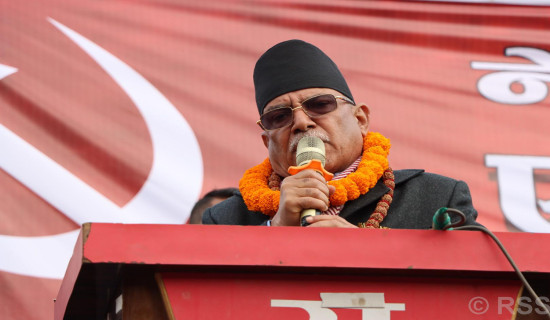- Friday, 2 January 2026
BFIs Seek Fair Deal
With the adoption of liberalisation policy especially since early 1990s, Nepal has witnessed an impressive development of financial sector. Banks and Financial Institutions (BFIs) that increased in a large number over the decades have played an important role in mobilising financial resources in an efficient manner which has contributed to the sustained economic growth. Growth in financial establishments creates a competitive atmosphere, promotes quality of financial services, reduces the cost of production and generate job opportunity. A study of the World Bank states that financial sector development enhances economic growth through capital accumulation and technological progress by increasing the savings rate, mobilising and pooling savings, producing information about investment, facilitating and encouraging the inflow of foreign investment.
In Nepal, BFIs have been divided into commercial banks, development banks, finance companies and microfinance institutions. The commercial banks have a lion’s share in the financial market as their transactions are huge and cover most parts of the country. Nonetheless, this does not mean that development banks and financial institutions have lesser role in sustaining the financial system. Although development banks and financial institutions are categorised into class ‘B’ and ‘C’ by the Nepal Rastra Bank (NRB), the development banks build an enabling ground for private-public partnership for investing in the infrastructure projects as well as meeting the Sustainable Development Goals. The development banks reach out to those areas where the private sector hesitates to invest. The development banks have their crucial role in boosting Micro, Small, and Medium Enterprises (MSME) that helps create employment opportunities and support financial system in the time of crisis.
The development banks and financial institutions have recently called for a proportional share in the money that the Deposit and Credit Guarantee Fund (DCGF) raises as deposit and loan guarantee fees of BFIs. They have complained that the Fund’s resources are available only to the commercial banks, describing it as a discrimination resulting from the defective policy. The DCGF runs a system to protect depositors against the loss of their guaranteed deposits placed in the BFIs in case of unlikely event of their bankruptcy, and guarantees against loan issued to an individual or institution. The related law obliges the BFIs to take membership of guaranteed member institution from the Fund and regularly pay the fees - including 0.5 per cent of the proposed paid-up capital as the initial contribution to it.
The DCGF has two separate funds – deposit guarantee fund and credit guarantee fund. Under the deposit guarantee, a bank or financial institution gets 100 per cent compensation when the NRB recommends that it is unable to make payment of deposits of guaranteed depositors in the process of financial liquidation, or winding up. The DCGF has now about Rs. 20 billion. Of this amount, only Rs. 350 million is invested in the government-issued development bonds while the rest is deposited in ‘A’ class banks. The existing Act related to the DCGF has been cited as an obstacle for the development banks and financial constitutions to get support from the Fund during the shortage of liquidity. The development banks have now stated that they want to bid for the term deposit of the DCGF money while urging the NRB to facilitate to amend the legal provisions so the all the BFIs benefit from the Fund. Given the development banks’ role in involving the private sector in development projects, they too have right to enjoy the resources at the DCGF.

















